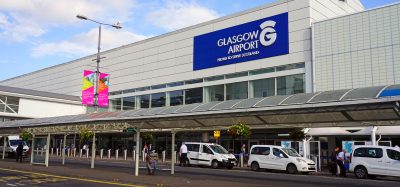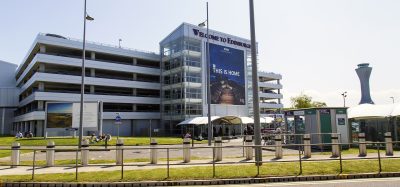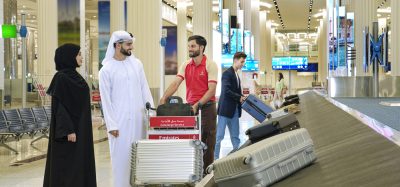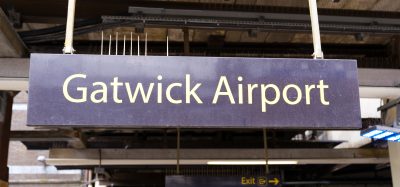Reducing the environmental impacts of ground operations and departing aircraft
- Like
- Digg
- Del
- Tumblr
- VKontakte
- Buffer
- Love This
- Odnoklassniki
- Meneame
- Blogger
- Amazon
- Yahoo Mail
- Gmail
- AOL
- Newsvine
- HackerNews
- Evernote
- MySpace
- Mail.ru
- Viadeo
- Line
- Comments
- Yummly
- SMS
- Viber
- Telegram
- Subscribe
- Skype
- Facebook Messenger
- Kakao
- LiveJournal
- Yammer
- Edgar
- Fintel
- Mix
- Instapaper
- Copy Link
Posted: 5 April 2010 | Kevin Morris, Aviation and Environment Manager, A|D|S | No comments yet
Following on from the successful “Arrivals Code of Practice”, UK aerospace industry experts from the airlines, airports, air traffic controllers, CAA and DfT chaired by A|D|S, have been working towards a similar Code of Practice for Ground Operations and Departing Aircraft.
A ‘Departures and Ground Operations Code of Practice’ has been developed by experts in the UK from airports, airlines, the UK air navigation service provider (NATS), CAA, DfT as well as the aerospace manufacturer’s trade organisation, A|D|S, who took on the running of this project. The aim of this exercise was to try to define what current ‘best practice’ looked like and then attempt to promote this across the whole industry. One positive aspect has been that, along the way, the group has helped to dispel some myths and misconceptions, both at the UK and at the international level via ICAO.
Following on from the successful “Arrivals Code of Practice”, UK aerospace industry experts from the airlines, airports, air traffic controllers, CAA and DfT chaired by A|D|S, have been working towards a similar Code of Practice for Ground Operations and Departing Aircraft.
A ‘Departures and Ground Operations Code of Practice’ has been developed by experts in the UK from airports, airlines, the UK air navigation service provider (NATS), CAA, DfT as well as the aerospace manufacturer’s trade organisation, A|D|S, who took on the running of this project. The aim of this exercise was to try to define what current ‘best practice’ looked like and then attempt to promote this across the whole industry. One positive aspect has been that, along the way, the group has helped to dispel some myths and misconceptions, both at the UK and at the international level via ICAO.
The ‘Code’ identifies and focuses on four areas to help reduce the environmental footprint of aircraft ground operations and departures. On the ground, these consist of advice for: the use of alternatives to running the aircraft’s Auxiliary Power Unit (APU); and promoting the use of taxiing on less than all engines where this is possible. In the air, Continuous Climb Departures (CCD) or ‘clear climbs’ is the technique highlighted and the final management part that aims to bring this all together is Collaborative Decision Making (CDM).
The advice published in the ‘Code’ aims to provide advice in order to mitigate noise, local air quality and emissions affecting climate change, of aircraft ground operations and departures and consists of various recommendations for the various groups involved.
It all started in late 1999, when a study carried out by the Governments Aircraft Noise Monitoring Advisory Committee (ANMAC) was carried out to assess the potential for noise reductions under the flight-path of aircraft arrivals into Heathrow, Gatwick and Stansted airports. The study concluded that there was no scope to setting noise limits for arrivals, as the only place where noise from aircraft could be identified as such was very close to the airport. At this point, aircraft were required to be in the landing configuration and con-sequently there was little or no scope for improving arrivals noise.
Following on from this study, there was a move to highlight the importance of noise impacts from arriving aircraft and this culminated in the publication of the ‘Arrivals Code of Practice’ in 2002. This ‘Code’, concentrated on promoting Continuous Descent Approach (CDA) – a technique where aircraft follow a continuous descending path from higher than previous levels down to the runway, avoiding the normal ‘stepped’ flight-paths where aircraft were conventionally given clearance down to a height where they then flew until cleared down to the next level, and so on in a series of steps like a staircase. The CDA technique was welcomed as it achieved both fuel burn/emissions and noise reductions and, as a result, this has also been taken up in international circles, most notably recently by EUROCONTROL.
An additional technique, Low Power/Low Drag (LP/LD), was also identified as a potential technique for noise reduction, though it could only be applied to certain aircraft and then not in all circumstances.
In February 2005, a small interested group got together to look at the potential for a similar code for aircraft departures, based around operations at the three major London airports and concentrating on noise and local air quality issues. This was followed up a year later in June and September 2006 by additional, more structured, meetings of a widened group of airports and airlines and including NATS for the first time. The group this time were helped by a link to the newlyformed Sustainable Aviation initiative (www.sustainableaviation.co.uk), which provided an additional driver.
Early in 2007, a meeting was held for all parties from the industry to see how much interest existed and to gather as wide a range of views as possible. The fact that the group was on the right track was aptly demonstrated when the meeting room booked was filled to above capacity, as more than 30 representatives from airlines, airports and NATS, cramped into a room meant for 20. The result was predictably a meeting that was difficult to control and took some time to arrive at a position where real progress could be made.
Almost a year later, the group was restricted to six individuals from airports, airlines and NATS, though in later months this was more than doubled and later on included members from the CAA (Environmental Research and Consultancy Department), DfT and the Society of British Aerospace Companies (SBAC, now A|D|S) which took on the running of the project. Though not strictly members, a number of other groups and individuals have also made invaluable contributions to the exercise, giving invaluable advice and insight into specific areas as the ‘Code’ progressed.
The focus of the ‘Departures Code of Practice’ was originally aimed at reducing noise and local air quality emissions but, with a growing interest in climate change issues, was expanded to look at all environmental aspects including fuel burn and associated emissions. At the same time, work had been started by BAA to look at ways of reducing ground noise and emissions and this overlapped with some of the work being carried out for the ‘Code.’ After some discussion, it was agreed to incorporate this work into an expanded ‘Departures & Ground Operations, Code of Practice’, to ensure that nothing was lost.
The code for departures and ground operations has proved to be more difficult to progress than that for arrivals for a number of reasons. The main reason being the lack of a pre-researched technical background document, that had been provided by the ANMAC technical working group for arrivals, where the fact that environmental impacts, which were generally all beneficial for arrivals, involve numerous trade-offs when departing aircraft were considered.
The group did manage to identify four primary areas where there was the potential to mitigate the environmental impacts of departures and ground operations and these were investigated further to form the basis of the Code of Practice.
The first area identified was taxiing with less than all engines operating (though this started off as ‘single engine taxi’ until it was pointed out that B747’s don’t taxi well on just one engine!). Some work had already been carried out by one of the working groups of ICAO’s Committee on Aviation Environmental Protection (CAEP), and their Circular 303 – ‘Operational Opportunities to Minimise Fuel Use and Reduce Emissions’, though any benefits for local air quality emissions of this technique were identified as tenuous at best.
Trials were carried out by two of the airlines belonging to the group, where information from the Flight Data Recorders of four different aircraft types were analysed and demonstrated worthwhile reductions in fuel burn and NOx emissions. As some aircraft required that the aircraft’s Auxiliary Power Unit (APU) was started before an engine was shut down, the effects of this were also included where appropriate but still showed a benefit to noise, fuel burn/CO2 (20% to 40% reduction) and NOx (10% to 30% reduction) emissions.
It was considered that enough information had been obtained to provide useful advice, which could be backed up by real data, to provide advice to operator’s flight planners and flight crew, and also airport operators. As some time would pass before the final ‘Code’ was ready, an interim report was considered the best way of getting the advice published as quickly as possible, and in October 2009 the first interim report was placed on the Sustainable Aviation website.
At the airport terminal or parking stand, alternatives to running the aircraft’s APU were identified and work carried out to identify the potential benefits from using terminalprovided Fixed Electrical Ground Power (FEGP) and Pre-Conditioned Air (PCA) where available.
This was later expanded to include the use of Ground Power Units (GPU’s) and air-conditioning units as more data became available for these as well. In this respect, some studies have indicated that APU’s can burn as much as six times the amount of fuel (and creating six times the carbon dioxide emissions) as a GPU providing the same service.
The concept of a ‘Ground Power’ hierarchy was developed, using airport terminal based FEGP and PCA (where available) first; followed by ground based GPU’s and air-conditioning units; then the aircraft’s APU, with main engine driven supplies being the last resort in the unusual event that none of the other facilities were available. Advice for this was introduced in a second ‘interim’ Departures and Ground Operations Code of Practice, published in December 2009.
Another area to be studied was the climb phase from the end of the initial take-off up to cruise flight levels. Here the concept of Continuous Descent Approach, but in reverse, was identified. The technique called Continuous Climb Departure (CCD), or ‘clear climbs’, has the potential to reduce both noise and fuel burn/CO2 by minimising the time a departing aircraft spends in level flight, just as with CDA’s on arrival. Indeed, as aircraft are normally heavier on departure, the potential benefits for noise and fuel burn for CCD’s will be greater than for CDA, and initial studies, by NATS, have estimated that up to 375kg of fuel (equivalent to over a tonne of CO2) per flight might be saved for large aircraft that are held down at low levels during departure.
However, this is not as easy as it sounds as there can be conflicts especially when the same airspace is required for the competing initiatives of both CDA’s and CCD’s. In this case it is important that a correct and full assessment is made to ensure that the benefits are maximised for the whole system and not just one part of it, and would probably need to be part of a policy decision.
One example of this was the holding patterns around some of the airports in the Southeast of the UK. A study is currently underway to see if it would be possible to raise the base of some of the holding stacks, to allow aircraft to maintain climbs below them without having to level off. Unfortunately just moving the complete stacks to higher levels would infringe the airspace used for aircraft over-flying the UK on North Atlantic routes, highlighting the complexity of the management of airspace in this region.
The final part of the ‘Code’ to be identified was the management of the departure process using the concept of Collaborative Decision Making (CDM), which binds the whole range of initiatives together and is already proving to be useful at some airports in continental Europe (e.g. Munich). In the UK some airports, such as Heathrow, have already implemented a first phase, in this case for arrivals, and much of the input to this part of the ‘Code’ has come from experience gained with this.
CDM aims to improve the situational awareness of the main partners involved in operations at the airport, and involves the sharing of information between airlines, airports and air traffic controllers. The process is designed to be able to optimise the pre-departure sequencing of aircraft and traffic flow around the airport, reducing holding delays by delivering aircraft to the runway at just the right moment. The benefits from this are pretty obvious in terms of fuel burnt and emissions generated (a B747 burns about 40kg and an A320 12kg of fuel every minute holding on the ground), but noise from aircraft queuing to depart is also reduced resulting in additional benefits here as well.
A ‘Technical Background Report’ has also been written to compliment the ‘Departures and Ground Operations Code of Practice’, adding more background information as well as detailing some of the studies that helped put numbers to the benefits of following these practices. This document also looks at a wider range of issues connected with departures and highlights potential developments that may prove useful in the future, but which are either not mature enough or require significant changes to aircraft, airports or the way that aircraft operations are managed at present.
It is planned that, when complete, an electronic copy of the ‘Departures and Ground Operations Code of Practice’, with the Technical Background Document, will be posted on the UK DfT’s website alongside the ‘Arrivals Code of Practice’, and disseminated amongst the airlines via the airports Flight Operations Committees, etc. In the meantime, interim copies are progressively being made available and can be found on the Sustainable Aviation website at www.sustainableaviation.co.uk.
About the author
Kevin Morris has been involved with the aerospace industry for nearly 30 years, of which more than 20 have been concerned with the environmental impacts of aviation.
He became Aviation and Environment Manager at SBAC (now A|D|S) after 21 years at British Airways dealing with aircraft performance, noise, and local air quality issues. Before that he served as an aerodynamicist at British Aerospace, Hatfield.
He has contributed to the IPCC Special Report on ‘Aviation and the Global Atmosphere’, and ICAO’s Circular 303, as well as helping to develop BA’s aircraft emissions model (BEAM). More recently he was involved with the PSDH study and ICAO’s Air Quality Modelling Guidance Manual, and chairs the group associated with Sustainable Aviation drawing up a code of practice for departing aircraft.
Issue
Related topics
Related organisations
ADS, EUROCONTROL, International Civil Aviation Organization (ICAO)

















